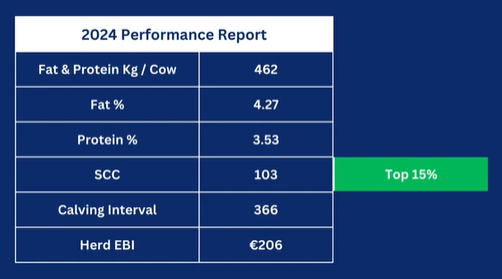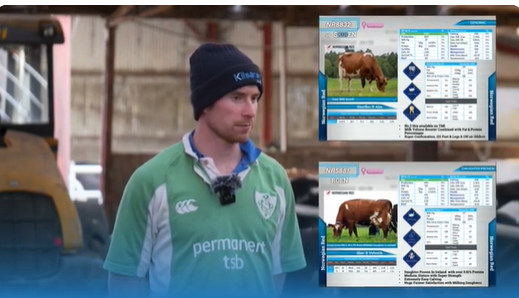On a 200-acre dairy farm in Bansha, County Tipperary, Ireland, Conor O'Sullivan and his parents have spent years refining their herd management. While they initially operated with a predominantly Holstein Friesian herd, the family turned to crossbreeding with Norwegian Red about eight years ago to address key challenges.
“We had big issues with empty rates, cows not getting in calf or getting in calf late in the year, and feet problems,” Conor explains. “We didn’t want to go down the Jersey route because we were concerned about cull cows and selling male calves. So, after visiting another farm successfully using Norwegian Red genetics, we decided to give it a try.”
Transforming Herd Fertility and Health
Since introducing Norwegian Red genetics, Conor has seen significant improvements in herd performance. The empty rate, which once hovered in the high teens and even reached 20%, has now been consistently halved, sometimes dropping to single digits. The calving interval has tightened, making herd management more efficient.
“The biggest difference I notice with Norwegian Red cows is their consistency. Unlike Holstein Friesians, where some cows peak at 40 liters per day, Norwegian Reds maintain a steady peak around 30 liters. That suits me just fine because they have fewer issues with feet and fertility,” says Conor. “The replacement rate has also dropped significantly. We used to lose a lot of first-calving heifers, but that’s no longer a major issue.”
Temperament has been another unexpected advantage. “They are unbelievably docile. A pleasure to milk,” Conor adds. He also notes that somatic cell count and mastitis cases have drastically declined, likely due to both genetics and the introduction of a cluster cleansing system.
Optimizing Breeding for Performance and Efficiency
Conor’s breeding strategy focuses on selecting cows with the highest protein production and good health traits. Most of the dairy replacements now come from the maiden heifers, where he uses sexed semen.

This change has allowed him to cut back significantly on the number of dairy AI straws used, from 180 per year to just 60 or 70.
“Before crossbreeding, we struggled to produce enough replacement heifers and had to buy some in. Now, we have plenty, and we can sell surplus calves early because the quality is so high. In fact, one buyer consistently takes about three-quarters of my calves and prefers Norwegian Red crosses because they perform so well for him.”
Balanced Bull Selection for Continued Success
When choosing bulls, Conor prioritizes maintaining herd size around 580 kg while aiming for 500 kg of milk solids per year. He looks for sires that balance protein, health, and management traits rather than extreme outliers.
Conor began his journey with Norwegian Red bulls like Braut (ZBR) and Eik (EKE) before expanding his breeding program with Reitan Two (NR2016) and Krovoll (NR4941). In recent years, he has introduced Skoien (NR8832) and Roen (NR5881) into the mix, and this year, he plans to add Hallanger (S4466) and Nerby-P (NR8826) to further enhance his herd's performance.

Conor has also found that the Norwegian Total Merit Index (TMI) offers a more precise guide for sire selection compared to the Irish EBI alone.
“Looking at TMI, I can better predict the stature and performance of my cows, avoiding the mistake of breeding cows too big or too small.”
A Future Built on Consistency and Quality
Looking ahead, Conor plans to continue using Norwegian Red genetics to maintain a compact, efficient herd. With a focus on protein improvement, fertility, and ease of management, he believes the breed has given him the tools for long-term success.
“It’s great to have a herd that’s consistent, productive, and low-maintenance,” Conor concludes. “And it’s always nice to see red calf in the mix!”
